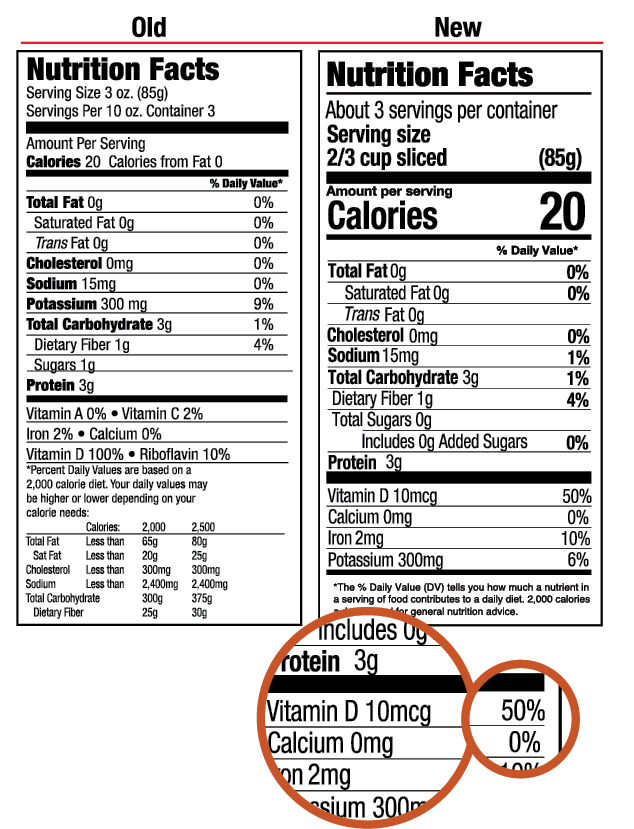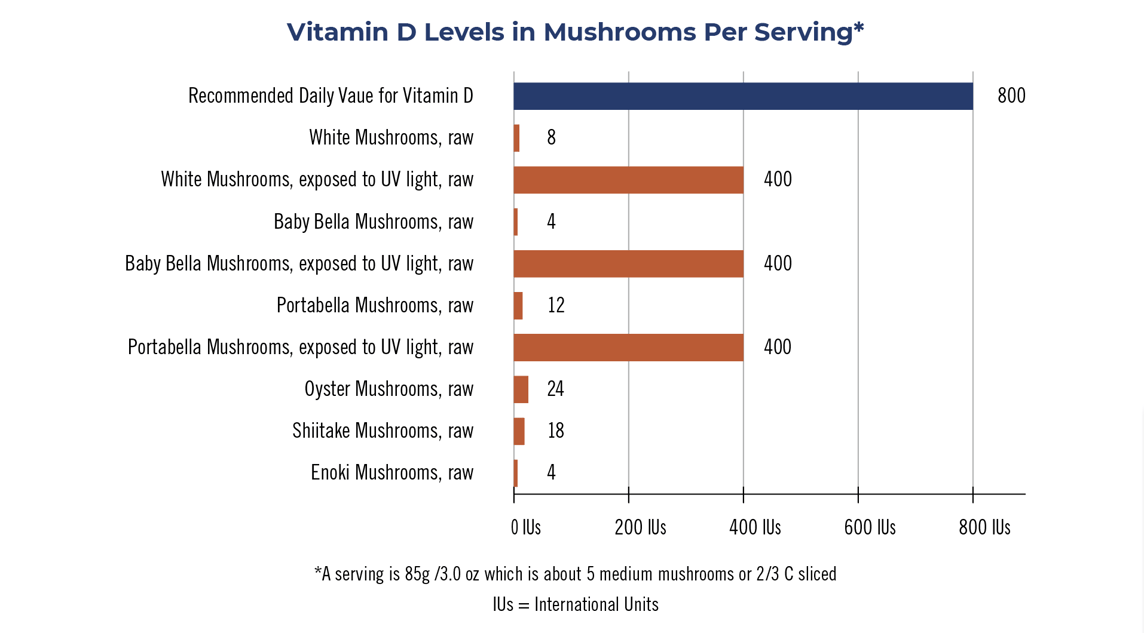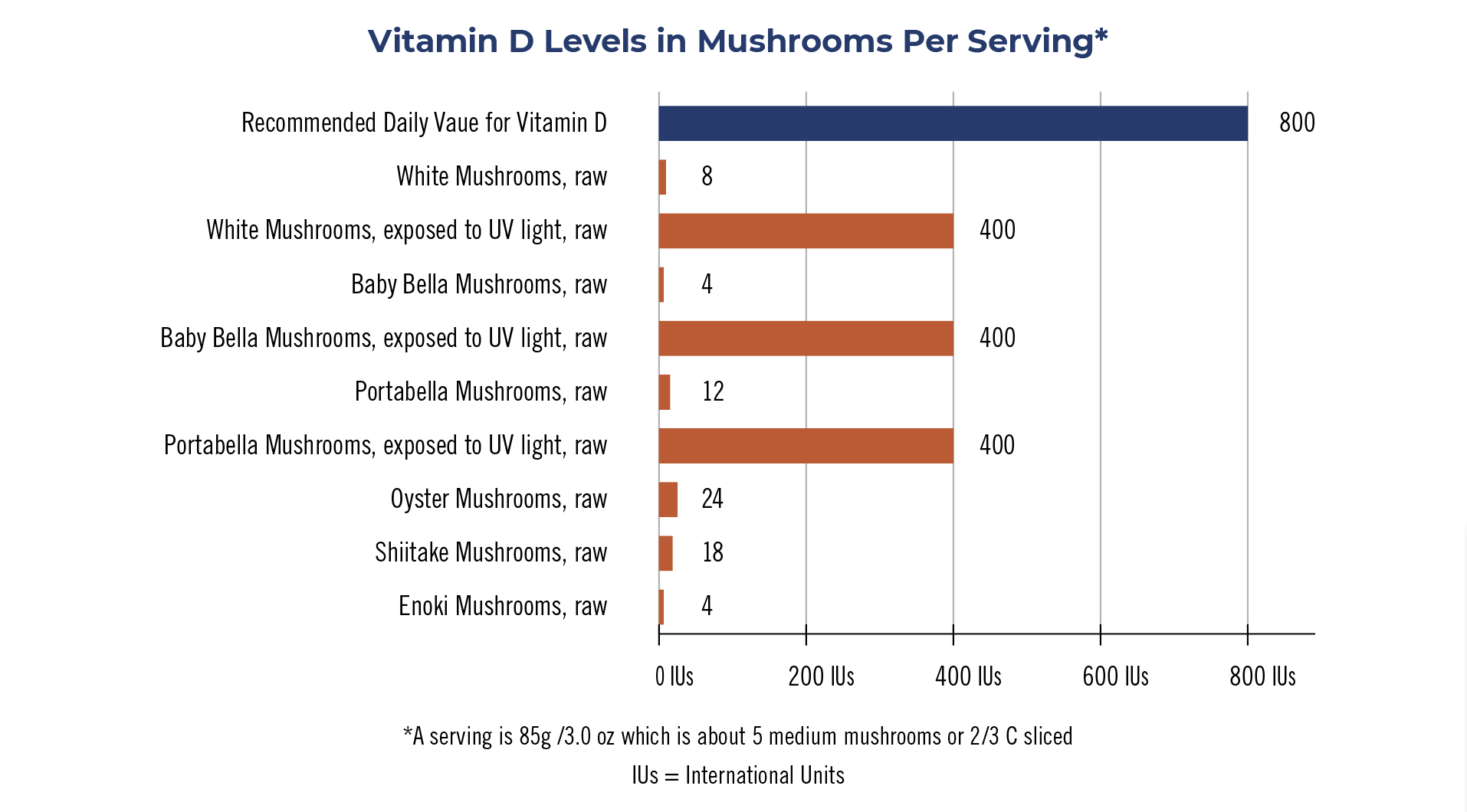Many Americans consider the nutritional value of their food important. Surveys show people want healthier food options, and that they care about how this food affects their wellbeing.
But when it comes to the standard “healthy foods,” like fruits and vegetables, many assume they must be good — not considering how some may offer more nutritional benefits than others. For example, Baby Bella mushrooms offer more B vitamins per serving than White mushrooms, while Whites offer more riboflavin per serving than Shiitake mushrooms. Others can vary based on their growing conditions, such as if they were exposed to UV light, or how fresh they were upon consumption.
Here at Monterey Mushrooms, we want to empower consumers to choose the best-of-the-best mushrooms in the produce department. Shop smarter by reading your mushroom nutrition labels with these helpful tips:
1. Understand why some mushrooms include nutritional facts while others don’t.
Next time you walk through the produce aisles, pick up any fruit or vegetable. Does the product have a nutrition label? Many fresh items don’t, and that’s because the food suppliers aren’t required to include nutritional facts unless they are making a nutrition or health claim.
You read that right: The U.S. Food and Drug Administration (FDA) doesn’t require all food types to include a Nutrition Facts Panel (NFP). The FDA’s labeling rules vary by product, but for mushrooms, most varieties will not include a nutrition label. This can be frustrating for shoppers, as it makes it difficult to differentiate one type of mushroom from another by the nutritional values.
So how do you know what vitamins or minerals, calories, carbs, protein or any other nutrients produce contain, without helpful nutrition labels? If you want to be a conscientious shopper, research these nutrition tips for common mushroom varieties from The Mushroom Council before grocery shopping.
2. Note the differences between the FDA’s old Nutrition Facts Panel and its new one.
The U.S. Food and Drug Administration recently restructured its Nutrition Facts Panel. As of January 2020, labeling regulations now require vitamin D to be listed in the Nutrition Facts Panel for all products, not just those that are marketed as high in vitamin D.
This is especially important when shopping for mushrooms, as unless a product explicitly says it on the label, it does not contain nearly as much of the sunshine vitamin as those labeled “High Vitamin D.” With 42% percent of Americans lacking adequate vitamin D, and mushrooms being the only item in the produce section high in this nutrient, mushrooms with “High Vitamin D” labels are some of the most nutritious mushrooms you can buy.
New to the power of vitamin D? Those with chronically low levels of vitamin D may be at higher risk of developing certain forms of cancer, type one and two diabetes, as well as bone and muscular health problems, such as multiple sclerosis, osteoporosis and arthritis. Learn more about The Ways Vitamin D Deficiency Can Affect Your Health here.

As you can see above, “High Vitamin D” mushroom labels will prominently display calories and other important nutrient listings and will call out the percentage of Daily Value (DV) per serving along with the actual amount of vitamin D in micrograms directly below the second thick black line.
The newer FDA labeling regulation requires food manufacturers to include potassium and vitamin D on NFPs, whether those nutrients are present or not.
3. Know how much vitamin D you should be getting.
Many adult Americans are aware that the recommended daily value for vitamin D is 800 IUs. This can be confusing, as NFP labels for mushrooms now list vitamin D in terms of micrograms.
When reading the label of mushrooms in the grocery store, look for mushrooms showing 10 mcg or more of vitamin D, which provides at least 50% of the daily recommended value.
Here is a comparison, detailing how common varieties of mushrooms stack up against one another in terms of vitamin D:

As you can see, White, Baby Bella and Portabella mushrooms exposed to UV light contain half of your daily value of vitamin D. Specialty mushrooms, like Oyster, Shiitake and Enoki surprisingly to many, do not contain nearly as much vitamin D as the other three varieties. If vitamin D is something you are lacking, choose White, Baby Bella or Portabella mushrooms labeled “High Vitamin D” for the most IUs per serving.
4. Understand the full nutritional value of mushrooms.
While we’ve focused on finding where vitamin D is listed on the Nutrition Facts Panel (NFP), mushrooms offer a variety of additional benefits, such as:
Selenium
This trace mineral is an antioxidant, meaning it helps to remove free radicals that are linked to cancer, heart problems, inflammation, premature aging and more. With about 8 mcg of selenium in three ounces (85 g) of white mushrooms, this serving provides 15% your daily value (DV). Brown mushrooms have even higher levels of selenium per serving, packing 40% DV in just three ounces.
Fiber
Unfortunately, most adults only average about 15 grams of daily fiber, when in reality we should have between 25 to 30, according to the UCSF Health. Mushrooms are a convenient way to incorporate more fiber into your daily diet. One cup of raw White mushrooms contains about two to four percent of your daily value of fiber, most of which is insoluble and can help to lower your risk for constipation.
Other types of mushrooms contain even more fiber, like Chanterelles, which contain 2.1 grams of fiber per cup when raw— or Enoki mushrooms at 2.3 grams per cup.
Potassium
Potassium plays an important role in helping your body maintain fluid and electrolyte balance. It also helps promote muscle function and protects your blood vessels from oxidative damage. A cup of White mushrooms contains roughly 6% of your daily value, while other varieties like Baby Bella offer 8% and Portabella 9%.
B Vitamins
In addition to vitamin D, mushrooms also contain five of the eight essential B vitamins such as riboflavin (B2), folate (B9), thiamine (B1), pantothenic acid (B5) and niacin (B3). White and brown mushrooms see significant levels of B2, B3 and B5, especially.
Not only do they help you form red blood cells, which carry oxygen and remove carbon dioxide, but these vitamins also allow your body to turn food into energy. A number of B vitamins are important for a healthy brain too.
Calories, Fat, Sodium and More!
Mushrooms are low in calories — usually containing close to only 20 calories per serving. Few realize they are also fat and cholesterol-free, very low in sodium, and a safe gluten-free option.

Curious to learn more about the nutritional benefits of your favorite mushroom variety? Use The U.S. Department of Agriculture's FoodData Central to search, typing in “Oyster mushroom, “Brown mushroom,” or your preference.
For instance, this result for raw White mushrooms details nutritional data for this popular fungus, filtered by portion size or measurement.
Or, download our informative ebook, Everything You Need to Know About Blending Mushrooms, which outlines more about the dietary benefits of mighty mushrooms!
Find High Vitamin D Mushrooms
When grocery shopping, always look for High Vitamin D mushrooms. They’re easy to spot, as they are required to have a Nutrition Facts Panel. This way, you can be sure this fresh produce offers the maximum benefits you are looking for.
Use the Monterey High Vitamin D mushroom finder to find a retailer near you who carries fresh High Vitamin D mushrooms. Additionally, look out for foods fortified with mushrooms in the dairy section and beyond.
Download our free ebook, Everything You Need to Know About Vitamin D & Mushrooms to learn more about this special nutrient and all the benefits of eating mighty mushrooms.








